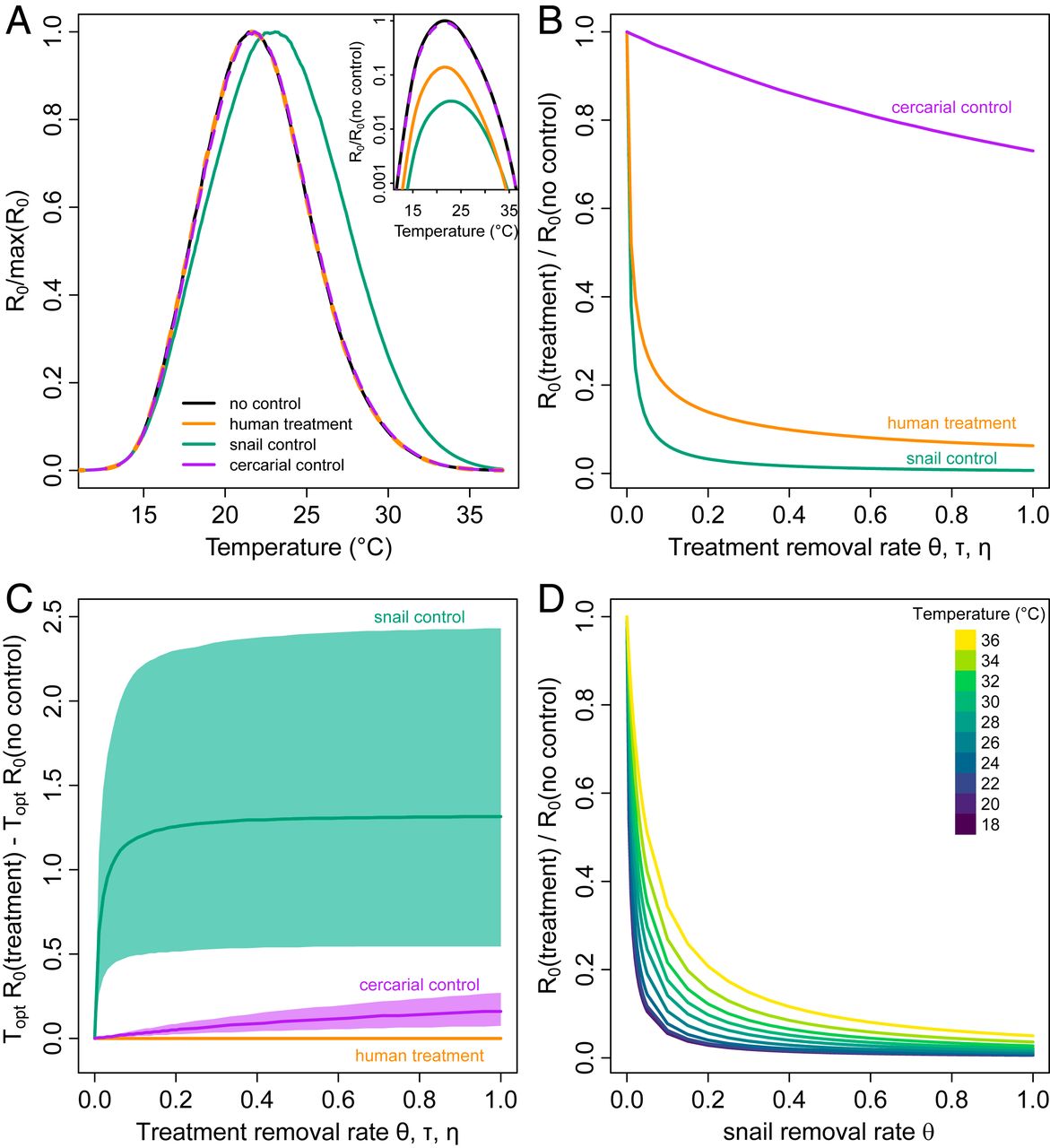
Temperature influences the transmission of many diseases, but the effects of temperature variability on the transmission of parasitic diseases are poorly understood. A new study investigated the influence of water temperature on the transmission risk for schistosomiasis, a disease that affects over 200 million people annually. Schistosomiasis is caused by parasitic worms which develop in fresh water snails and infect humans and livestock when they come into contact with contaminated water.
The study, co-led by Karena Nguyen from Emory University and Philipp Boersch-Supan from the University of Florida, found that temperature affects each life stage of the parasite and the intermediate snail differently, and that these differences shape disease transmission and the effects of interventions. Combining information on temperature-specific traits in an epidemiological model, showed that transmission risk peaks when water warms to 21.7 degrees centigrade or 71 Farenheit. The model also allowed the researchers to simulate interventions targeting the disease in different ways, for example by treating humans or removing snails.
The simulation results showed that removing snails was the most effective intervention to reduce transmission, especially when applied at low environmental temperatures. Surprisingly, simulated snail removal also raised the optimal temperature for transmission by up to 1.3 degrees centigrade.
“Snails naturally start to die off when water temperatures rise.”, says Boersch-Supan, who started working on the project as a postdoctoral researcher at UF’s Department of Geography and the Emerging Pathogens Institute, “But interventions like chemical treatments amplify snail mortality at all temperatures. This decreases disease transmission overall, but it allows the peak of transmission risk to occur at higher temperatures, which benefit the hatching of parasite eggs.”
“We’ve shown how and why temperature matters when it comes to schistosomiasis transmission risk,” says Karena Nguyen, a post-doctoral fellow in Emory University’s Department of Biology. “If we really want to maximize human health outcomes, we need to consider disease transmission in the context of regional temperatures and other environmental factors when developing intervention strategies.”
The study’s findings can guide public health workers to take regional water temperatures and their seasonal fluctuations into account when planning interventions that target aquatic parasites and their snail hosts.
Additional authors of the PNAS paper include Jason Rohr (Notre Dame University), Valerie Harwood (University of South Florida), Rachel Hartman (Emory staff) and Emory graduate student Sandra Mendiola.
The work was funded by the National Institutes of Health, the National Science Foundation, the Porter Foundation and the U.S. Department of Agriculture.